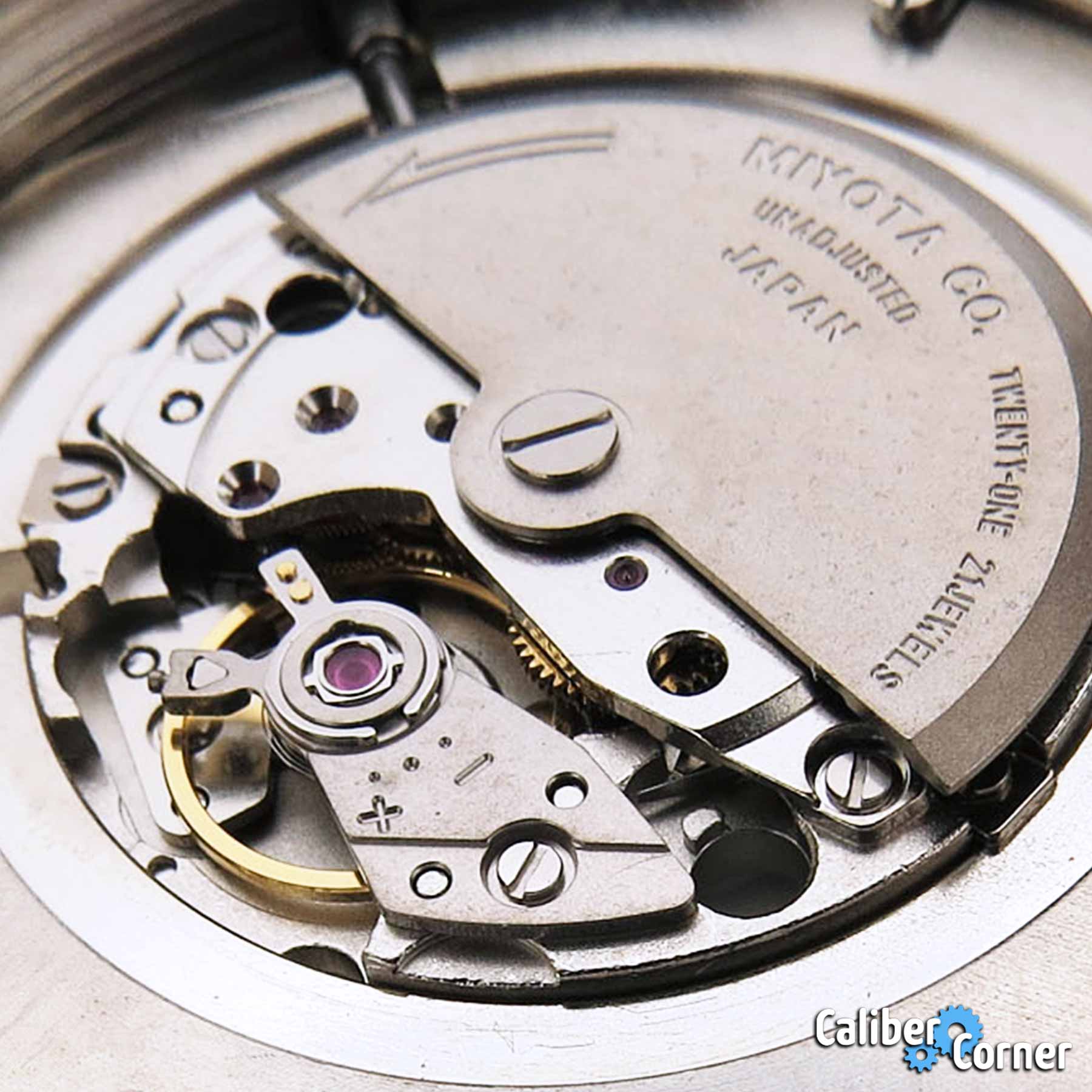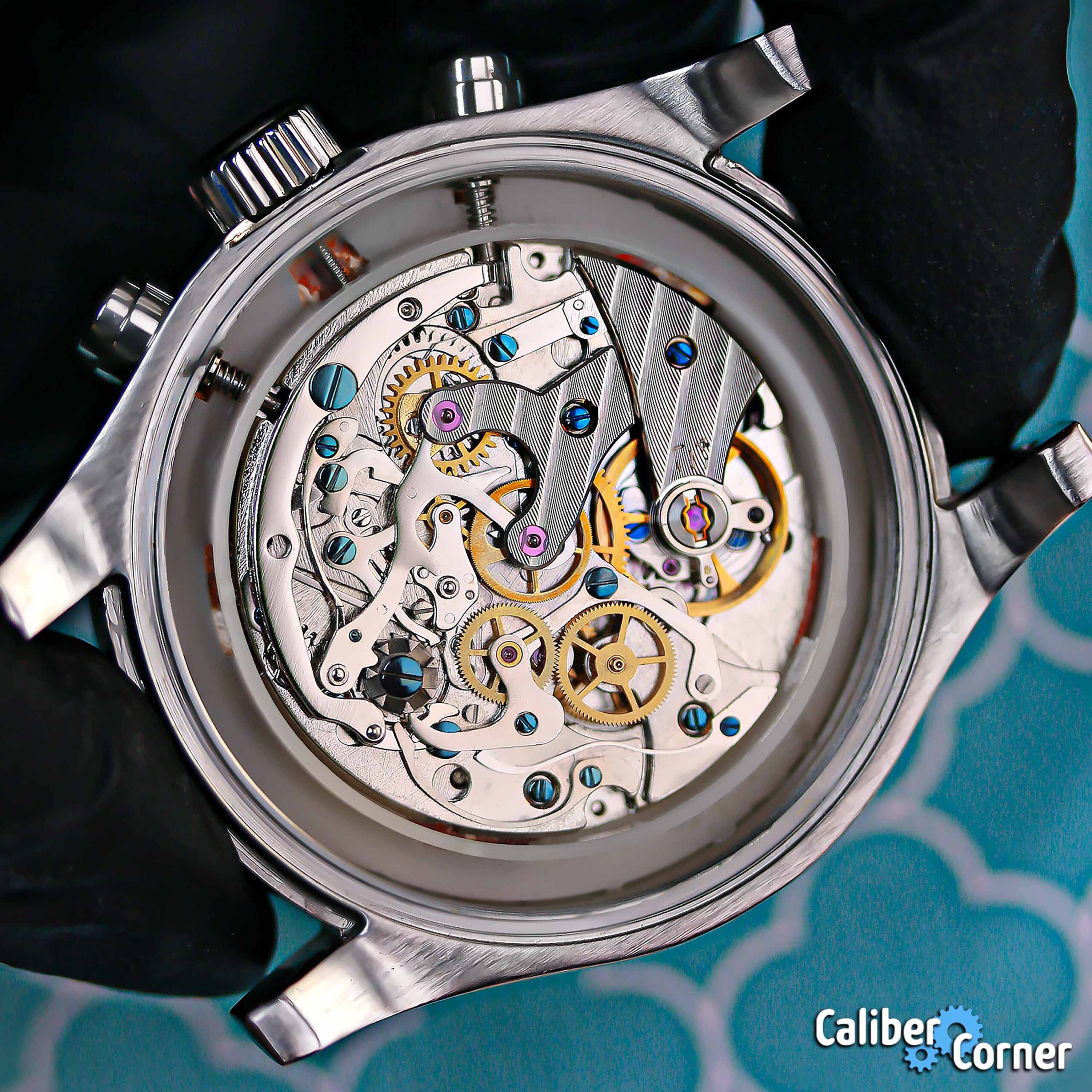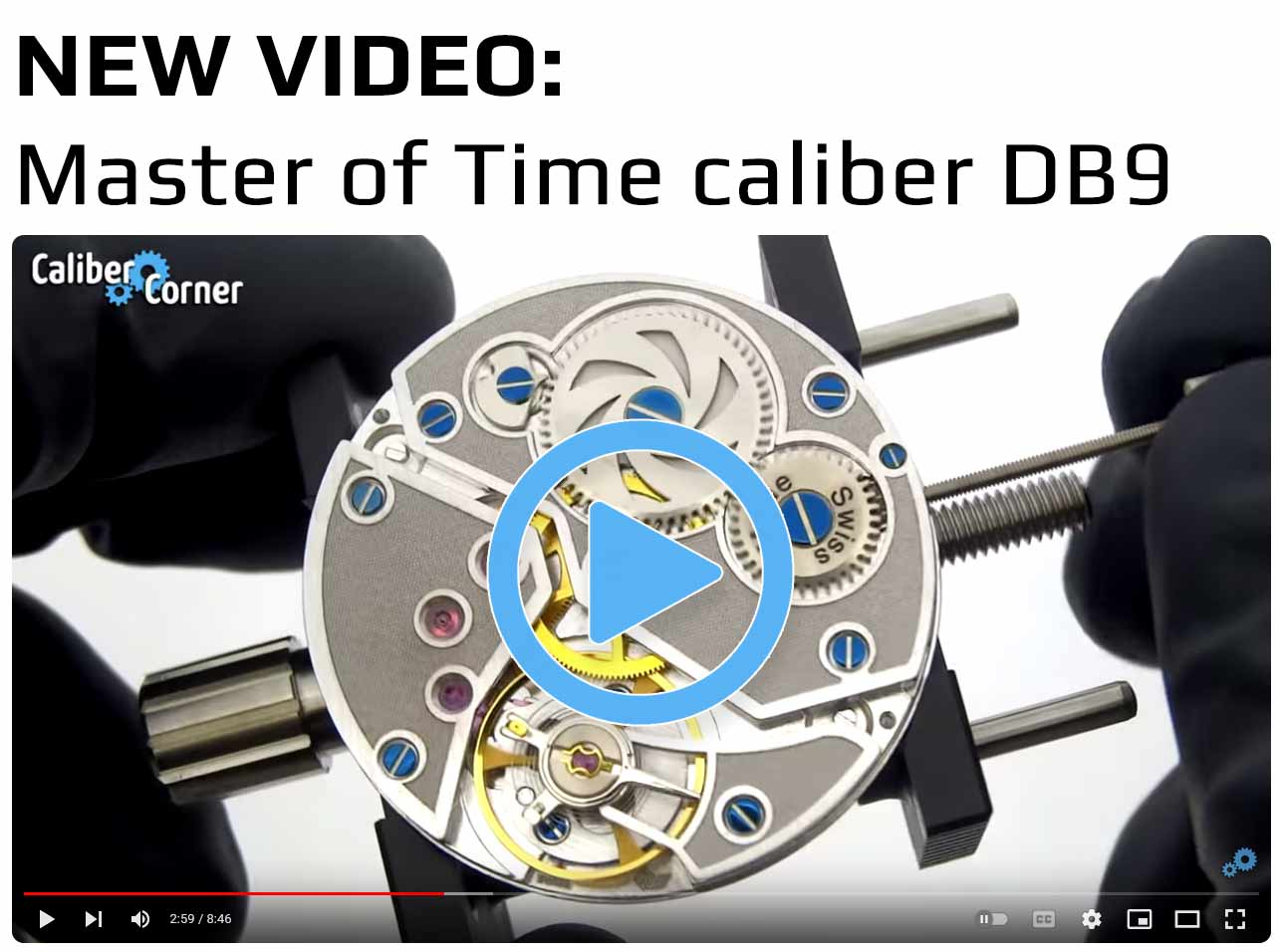
Some of the topics covered in this caliber listing:
The second hand on my Miyota powered watch isn’t smooth… why?
Is your automatic timepiece ticking like a quartz watch? Whether you call it stalling, stuttering, shuttering, hesitating, cascading or skipping, rest assured that the sweeping seconds hand on your Miyota movement (and even some older Swiss made movements) isn’t broken, it is normal.
While it may be alarming at first, and annoying to many collectors, the central sweeping seconds hand is prone to hesitation or stalling because of what is called an Indirect Drive system.
Note: Also keep in mind that if you are used to the Miyota caliber 9015 or modern Swiss automatic movements like the ETA 2824-2 or Sellita SW200-1, they beat at a higher rate (28,800 bph 4Hz) than the Miyota which beats at 21,600, so you may be more sensitive to the stalling seconds.
What causes this issue?
Let’s be clear, it’s not an issue with your watch, it’s the way the movement was designed. Watch movements that experience the stuttering central seconds hand use the third wheel in the gear train to indirectly drive a pinion which advances the seconds hand.
Back in the year 2000, Rob Berkavicius (Rob B on TZ) and Paul Delury (Gumby on TZ) wrote this article addressing the concern of the second hand momentarily stopping when the watch is bumped on the side. The team set out to explore why it happens on the caliber 8215, whether it is acceptable, and if it affected timekeeping. It’s recommended that you check out the entire post here, but the main idea is:
“The Miyota cal 8215 is an indirect sweep seconds design, very common in Swiss watches of even very high grades in the past. It allows for an elegantly simple design of the the watch, in this case the top plate encompasses both the time and winding trains. This view of the train, shows the sweep second pinion which passes through the center wheel, and is driven by the 3rd wheel.”
It is mostly noticeable when flicking the wrist or moving the watch side to side, and can appear to leap forward or stop for as long as 2 seconds.
Does the skipping second hand affect accuracy or timekeeping?
No. Simply check this answer for yourself by timing your watch. If you have a skipping second hand, is your watch still maintaining accuracy? If not, are you sure it’s not because your watch needs serviced?
More from the aforementioned article:
“Although this looks cosmetically unappealing, it makes no difference at all to the timekeeping of the watch. Increasing the tension of the brake spring must be done with great care, as too much tension will start to significantly affect the balance amplitude (from the extra friction in the train), and thus the timekeeping. And, this indeed is one of the reasons why “direct seconds” watch designs are now favored by watch manufacturers.”
Do all Miyota movements have this issue?
Again, the hesitating second hand is not really an issue. Not all Miyota movements experience this. For instance, the Miyota caliber 9015 has a Direct Drive seconds hand and does not have hesitating seconds.
The series of Miyota movements based on the 82XX caliber have the Indirect Drive system. Although not every collector will notice it or care about it, all movements with this setup will most likely experience the skipping seconds phenomenon, or it may become more visible in time. It can also depend on the dial and hands of the watch. For example, longer hands may show the stutter to be more dramatic, while less legible dials may make it more difficult to notice. Another factor is the tension in the brake spring… keep reading.
Is there a fix or solution?
Due to the design of the gear train in these movements, you cannot eliminate the hesitating seconds entirely, but your watch can potentially be adjusted and reduce the occurrence or obviousness of the seconds skipping a beat.
Technically speaking:
“…The brake spring, while effective at removing jitter, does not provide enough tension to hold the pinion steady under all conditions. So, when the watch is knocked, the pinion may be moved partially or all the way to the other side of the “slop”, and it may take a second or so for the movement to “catch up” again.”
Video of the brake spring being removed:
Some watch collectors attempt to adjust this spring DIY style. Just remember that while this may fix some of the stutter, it is not guaranteed, so try at your own risk. Not recommended!
Conclusion
Long story short, if what you’re actually seeing is the infamous Miyota “stuttering” seconds, then do not fear and do not fret! It’s ok and you can go back to enjoying your watch. Just be proud knowing that your timepiece can skip a few seconds and still be on time, not all movements can claim the same
“The “Hesitating Second Hand”, observed on Invicta and other brands of watches is simply a characteristic of the “Indirect Seconds” type of movement design and in no way has any effect on the watch accuracy or timekeeping. If any watch company wanted to do something about it, the simplest, and really the only practical solution, would be to poise the second-hand. However, tens of millions of Indirect Seconds type watches of many different manufacture, in all grades from the cheapest pin pallet to high grade Swiss watches have been made in the past 50 years or so, and have been used with no problems at all. Indeed, it is hard to imagine how this characteristic could ever be observed during normal wear on the wrist, anyway. One can only assume it was claimed as a problem in an attempt to find fault in a watch which offers such excellent value for money as the Invictas do. So all you owners of Invictas, Omegas or any of the many, many other brands that use the same method for driving the second hand, there’s no need to worry about it!”
If you still can’t deal with it, your next option is to buy a watch with a direct drive seconds hand such as the caliber 9015 or a modern Swiss movement.
Who explained it better?
Which movements have Indirect Drive seconds?
- Miyota caliber 8215
- Miyota caliber 821A
- Add more to the comments below…
Please tell us if your watch has stuttering seconds in the comments below…



 network of watch sites
network of watch sites













Recent Comments
My 16 year old SARB059 (Alpinist) has a 6R15B movement. It has been sitting in…
L2.628.4 Master Collection with L 888.2 has open caseback. This was one of many reasons…
"If you have a 25 jewels ETA based GL224, please comment below if the caliber…
I'm not technical enough to give an informed opinion about Omegas co-axial implementation but I…
Seems that 0950 is the new version Maybe same situation with 9011 and 9051
Cap jewels "down" the train of wheels from the balance is always an upgrade in…
What does AC mean on the battery cover? Thank you